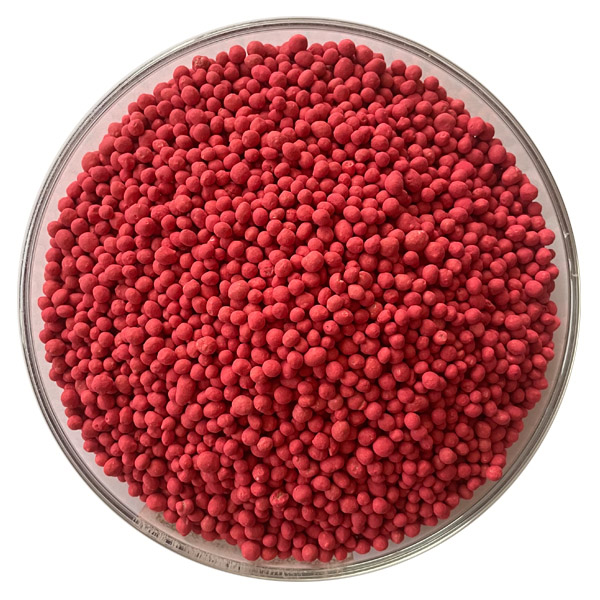
Nov . 10, 2024 15:48 Back to list
Current Trends in Potash Fertilizer Prices and Market Insights
The Importance and Dynamics of Potash Prices in Fertilizer Markets
In the world of agriculture, the role of fertilizers cannot be overstated. They are essential for enhancing soil fertility, boosting crop yields, and ensuring food security in an ever-growing population. Among various fertilizer components, potash—a potassium-rich mineral—plays a vital role in plant health. It aids in water regulation, improves disease resistance, and enhances the overall quality of crops. Given its significance, the price of potash is a critical factor influencing agricultural practices and farmers' economic viability.
Understanding Potash
Potash is primarily composed of potassium, which is one of the three essential nutrients that plants need, alongside nitrogen and phosphorus. Potassium is crucial for several physiological processes in plants, including photosynthesis, enzyme activation, and transportation of nutrients and water. The most common source of potash is potassium chloride (KCl), but it can also be found in various other forms, including potassium sulfate and potassium nitrate.
Current Trends in Potash Prices
Potash prices are influenced by numerous factors, both on the supply and demand sides. In recent years, the global demand for potash has surged due to increasing agricultural production needs, particularly in regions experiencing population growth and urbanization. Countries such as India and China, which are major agricultural players, have significantly increased their imports of potash to sustain their food supply chains.
As of October 2023, potash prices have witnessed fluctuations due to a combination of geopolitical tensions, supply chain disruptions, and changes in agricultural policy. Following the COVID-19 pandemic, the fertilizers market—including potash—faced interruptions due to labor shortages and logistical hurdles. However, as economies began to stabilize, there was a gradual rebound in demand.
In addition to health-related disruptions, the ongoing war in Eastern Europe has added an extra layer of complexity to the potash market. Some key global suppliers have had their operations impacted by sanctions and logistical challenges. This geopolitical instability has driven up prices as countries scramble to secure their fertilizer needs. Many farmers are feeling the pinch, as rising potash prices directly correlate to increased costs for input supplies, which can lead to higher prices for consumers.
fertilizer potash price

The Impact of Potash Prices on Farmers
For farmers, the cost of fertilizers is a significant portion of their operating expenses. Fluctuations in potash prices can directly impact their profitability and willingness to invest in fertilizer use. When potash prices rise, farmers may be forced to make difficult decisions regarding their crop management practices. Some may reduce their use of fertilizers to cut costs, leading to potential declines in crop yields and overall quality.
Moreover, high potash prices can create disparities between large agribusinesses, which can navigate cost fluctuations more effectively, and smaller farms that may lack the financial resources to absorb rising costs. Consequently, these price changes can exacerbate existing inequalities within the agricultural sector.
Future Outlook for Potash Prices
Looking ahead, several factors will likely continue to shape the potash market. Increased investment in sustainable agriculture practices could lead to higher demand for potash, as crops grown in healthy soils typically require adequate potassium levels. Additionally, advancements in technology and production efficiencies may help stabilize prices.
However, macroeconomic factors such as inflation, currency fluctuations, and ongoing geopolitical tensions will remain critical in determining the future trajectory of potash prices. Furthermore, environmental regulations related to mining and fertilizer production could also play a role in limiting supply, driving prices upward.
Conclusion
In conclusion, potash prices are a vital component of agricultural economics, influencing everything from farm profitability to global food security. As the world grapples with both environmental challenges and population growth, the importance of understanding and stabilizing potash prices will only continue to grow. Farmers, policymakers, and industry stakeholders must work together to navigate these complexities to ensure a sustainable and secure food supply for the future.
-
High-Efficiency Plant Soil Water Soluble Fertilizer Reliable Manufacturer
NewsApr.29,2025
-
High-Potassium Organic K Fertilizer 7-2-4 Supplier & Manufacturer
NewsApr.29,2025
-
10-54-10 High-Phosphate Fertilizer NPK Blend for Root Growth
NewsApr.28,2025
-
NPK 8-2-12-4 & 20-20-20 Compound Fertilizer Suppliers Crop Boost
NewsApr.28,2025
-
Premium 50 lb Fertilizer Bags Bulk Supplier & Factory Deals
NewsApr.28,2025
-
Different Types of NPK Fertilizer Manufacturer & Supplier Custom Blends
NewsApr.28,2025
